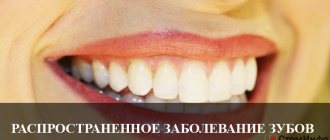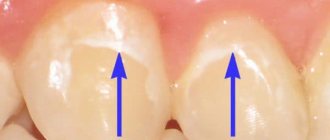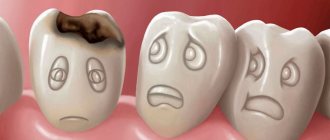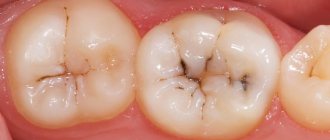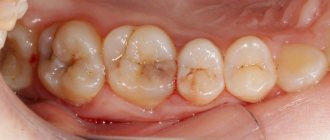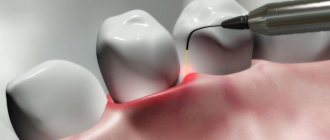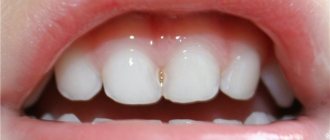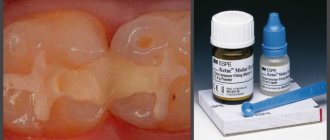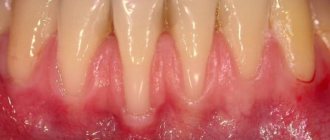Nutrition and caries
Did you know that 70% of human health depends on nutrition? The most dangerous component for teeth is the carbohydrate sucrose. This is the sugar we all know, which is full of candies, cakes and sodas.
Yes, bacteria are also not averse to eating carbohydrates. It is not for nothing that statistics show that people who have worked for more than 10 years in a confectionery factory have a high intensity of the carious process.
Cod liver oil dosage
¼ – ½ tsp. 2-3 times a day for teenagers and adults, which will be ½-1 ½ tsp. in a day
The amount of cod liver oil you need depends on how deficient you are in fat-soluble vitamins A and D, your weight, the amount of time you spend in the sun, and your overall health. I recommend starting with the recommended amount and then decreasing or increasing it depending on how you feel. It's okay if you miss a few days and take more than usual on other days. 2 ½ capsules of Green Pasture™ cod liver oil equals approximately ¼ tsp. fat in liquid form.
Nutrition as a factor in the occurrence of caries
Cariogenic bacteria that live in the oral cavity (Streptococcus mutans, Streptococcus sanguis) live off carbohydrate food residues. Microbes convert simple carbohydrates into organic acid. This process is called fermentation, or fermentation.
The acid comes into contact with the surface of the teeth, dissolving the mineral components of the enamel. Acid thins the enamel and a tooth cavity forms.
WHO experts have proven that in countries where the population consumes less than 27 grams of sugar per day, caries is less common.
Other carbohydrates (glucose, fructose, lactose) also have cariogenic potential, but to a much lesser extent.
How teeth clean themselves
Each tooth contains about 4.8 km of microscopic tubes called dentinal tubules. The diameter of dentinal tubules is 1.3–4.5 microns. This is about one thousandth the size of a pin head. The dentinal tubules are filled with a fluid that is thought to have a composition similar to the cerebrospinal fluid that surrounds the spinal cord and brain. Tooth enamel contains about 2% of this liquid.
Nutrition of dentin and enamel is provided by special building cells called odontoblasts. They carry or distribute certain nutrients through the dental lymph. Odontoblasts contain microscopic structures that function as pumps. As a result, a healthy tooth cleans itself. Microscopic droplets of nutrient fluid secreted from our blood are pumped through the tubules. In a healthy tooth, this fluid moves under pressure from the pulp towards the enamel, protecting the teeth from corrosive substances present in the oral cavity.
Located at the back of the jaw, the parotid glands regulate the activity of the nutrient-rich dentinal fluid. The signal to the parotid glands comes from the regulatory center of the brain, the hypothalamus. When, at the command of the parotid salivary glands, the movement of dental fluid begins to go in the opposite direction (as a result of poor nutrition or for another reason), then food debris, saliva and other substances are drawn through the tubules into the tooth. Over time, the pulp becomes inflamed and destruction spreads to the enamel. This deterioration process involves the loss of several key minerals - magnesium, copper, iron and manganese.
In this regard, tooth decay should be classified as a different category of disease. The traditional definition of caries as a disease of an infectious-bacterial nature is false. In fact, caries is:
- odontoporosis - a decrease in the density of dental tissue, leading to its weakening, and
- odontoclasia - resorption and destruction of tooth enamel, dentin and tissue.
Diet against caries
A complete diet includes 5 main components: proteins, fats, carbohydrates, vitamins and minerals. The most important for dental health are calcium, fluoride and vitamin D.
The optimal dosage of fluoride per day is 2-3 mg, while a large amount of the mineral enters the body with drinking water. Many cities specifically carry out fluoridation of water. Fluorine, together with calcium and phosphorus, takes an active part in the formation of bone tissue and tooth enamel.
However, it should be remembered that an increased fluoride content is fraught with the development of fluorosis. This is a chronic disease that causes a “mottled enamel” effect.
Calcium
Calcium is the main building material for teeth and bones. The daily calcium requirement for an adult is 800-900 mg. However, this element is absorbed only with a sufficient amount of vitamin D.
Vitamin D
Vitamin D is produced by the body when exposed to sunlight. But residents of northern regions, where there are few sunny days, are recommended to take dietary supplements with vitamin D; its daily requirement for an adult is 5 mcg.
Importance of Nutrition
After 30 years of research and blood tests of 40,000 patients, it was discovered that an imbalance in the blood ratio of calcium and phosphorus causes tooth decay and gum disease.
Most importantly, it is known that a ratio of 8.75 mg calcium to 3.5 mg phosphorus per 100 cc of blood, with a normal blood sugar level of 85 mg per 100 cc of blood creates immunity to dental caries. When this ratio deviates or when blood sugar levels become too high or low, minerals are removed from the dentin and bones to compensate for the lack of elements, resulting in tooth decay.
However, even if you have ideal blood sugar levels and the right ratio of calcium to phosphorus in your diet, the presence or absence of fat-soluble vitamins A, D, E and K determines whether your body can use these minerals in the proper manner.
Unfortunately, these vitamins are largely absent from diets, and without them, not even all the minerals in the world can compensate for their role in bones and teeth.
On average, people don't get enough of the vitamins and minerals they need to stay healthy because we rarely buy high-quality food, fresh, organic produce, home-grown animal products, and green leafy vegetables.
In addition, most people's standard diets contain extremely high levels of sugar (including natural sugar from fruits and juices), white flour, processed and denatured foods, caffeine, preservatives, and other food toxins that cause rampant blood sugar fluctuations and epidemics of chronic diseases in our country.
Nutrition example
The combination of poor nutrition and highly processed foods leads to radical biochemical imbalances that ultimately develop chronic and degenerative diseases, including tooth decay and gum disease.
For comparison, we present the results of a study of the nutrition of different peoples now in our time and their ancestors 150-200 years ago. In the case of the Swiss, it was found that the isolated Swiss diet contained 10 times more fat-soluble vitamins, 4 times more calcium and 4 times more phosphorus than modern Swiss cuisine.
Aboriginal Australians ate foods that contained 5 times more calcium, 6 times more phosphorus and 10 times more fat-soluble vitamins than the modern Australian diet.
People who maintain a healthy diet have healthy, straight teeth and are virtually immune to tooth decay. But those who eat modern foods quickly succumb to tooth decay and gum disease.
Useful foods for caries prevention
Apples, carrots, cabbage.
Such solid food helps cleanse bacterial plaque that adheres to the surface of the enamel.
All berries are red, purple and blue.
They are rich in bioflavonoids, these are vitamin-like substances that prevent the formation of bacterial film on teeth.
Cereals, whole grains, bran.
They stimulate saliva production and also contain polyphenols (antioxidants) that protect enamel from destruction.
It is a storehouse of proteins, vitamins and minerals.
Sea fish, algae.
Seafood is rich in vitamin D, calcium, potassium, magnesium, and phosphorus.
It is a powerful natural antiseptic and neutralizes cariogenic bacteria in the mouth.
Cheese is rich in phosphorus, calcium and fatty acids, which act as antimicrobial agents. Whey protein, which is part of the cheese, promotes the remineralization of enamel.
Harmful products
List of main products that contribute to the formation of caries:
- sweets – chocolate with additives, jam, cakes, cookies;
- excessive salt interferes with the absorption of vitamins and minerals;
- soft, sticky food - particles of such food remain on the surface of the teeth, which contributes to the process of rotting and fermentation in the mouth;
- sweet drinks - soda not only contain a large amount of harmful sugar, but also literally “corrodes” the enamel. It is recommended to drink carbonated drinks through a straw.
The composition of drinking water also matters for dental health. Untreated water with a high content of sodium chloride, copper, and nickel is dangerous.
Products necessary for dental health
There are a number of products that have a positive effect on teeth, strengthening enamel and protecting the oral cavity from the development of carious lesions. How often you eat these foods can be a deciding factor in keeping your teeth healthy, so read the data carefully and remember them forever:
- Everyone knows that milk contains a lot of calcium, which is necessary for both teeth and bones. It’s just that only children actually use it. Adults forget about this product, remembering it only when making coffee, and even then not always. But in vain. Calcium, vitamin D and phosphates, the abundance of which in this product make it simply irreplaceable, are actively absorbed into the body, and become the building blocks that make teeth and bones strong, and also protect and restore tooth enamel, if it has not yet been seriously damaged. Are you allergic to lactose? Swap regular milk for soy and almond milk. Of course, this is an unequal replacement, but the amount of calcium in them is also quite large. And for those who decide to become vegetarians, such milk will be useful.
- We can talk a lot about hard cheeses for a long time. There are so many of them, different in taste and appearance, that your eyes just run wild across the store shelves. Which to choose? The one with the big holes? Perhaps it's better to take a thick one? What if you try French? Either way, your choice is good for your teeth. Such cheeses are a wonderful help in the fight against carious formations. Some people consider hard cheese simply a high-calorie and useless product, but calcium and phosphates, which actively affect the liquid medium, neutralize the acid that destroys the layer of tooth enamel. Casein, which is contained in such cheese, also takes part in protecting teeth, acting as building blocks that close the small cracks that form on the surface of the teeth before the enamel is destroyed.
- Man is actually 80% water. Some writers compare us to bags filled with not entirely pure water. And they are somewhat right. Water is the basis of our life. If you look at this life-giving liquid from the dentistry side, then here too it is irreplaceable. Firstly, water perfectly washes tooth enamel, removing food debris, plaque and acid. Secondly, water is the basis for the production of saliva, which normalizes the balance of substances in the oral cavity, taking care of its health.
- Juicy, crispy, filling. What is this? Of course, an apple. What does this fruit have to do with tooth enamel problems? The most direct. Like hard cheese, apple pulp, once on the tongue, causes copious salivation. And this, as we already know, guarantees a healthy environment and strengthening of the enamel. In addition, apples contain a lot of fiber, which actively cleanses the surface of the teeth from the remnants of previously eaten food, which prevents the formation of new cracks. At the same time, apples are an excellent source of vitamins, including vitamin C. This guarantees the strengthening of the gums, which will help avoid cervical caries.
- Do you like citrus fruits? Then you can be congratulated on your good taste. After all, orange is a wonderful fruit that has a very positive effect on the condition of teeth. Vitamins C, D and calcium contained in these tasty fruits cleanse the entire oral cavity, disinfect and strengthen thin enamel. Orange juice or smoothies are great drinks that you should consume to maintain your oral health.
- Almost everyone loves yogurt (especially with different flavors). But few people know that it is additives that completely remove all the positive qualities of this useful product. Pure yogurt (no sugar or fruit) is a storehouse of protein and calcium. This allows him to maintain teeth in excellent condition, while actively influencing intestinal function, normalizing it.
- Those who like to crack nuts and seeds can praise themselves for taking care of their health. All of them are full of vitamins and minerals that strengthen teeth and bones. Each type of nut has a unique set of beneficial substances, so it is worth alternating the use of walnuts, cashews, hazelnuts, pumpkin and sunflower seeds, almonds and other equally tasty and healthy nuts.
- Cranberry is a product known to our ancestors since ancient times. This berry has always been valued for its taste and usefulness. It contains almost the entire table of vitamins, but it, like many other berries, includes special substances called flavonoids. Thanks to them, cranberries prevent pathogenic bacteria from sticking to tooth enamel, protecting teeth from caries. These same substances are found in abundance in blueberries.
- Tea has become an integral part of our culture, which is naturally very good. Real oriental tea (like English) includes polyphenols. These substances actively interact with the environment, while helping to cleanse the oral cavity of acid and pathogens. Both green and black tea help the enamel to recover and heal microcracks. But this is true only in those cases when we drink pure tea, that is, without adding sugar, which has a destructive effect on the enamel. To make tea sweet, it is better to use natural bee honey.
- We all know from childhood that sweets spoil our teeth. But among all the variety of goodies, there is one product that benefits them. This is dark chocolate. It contains a very large amount of natural cocoa, the composition of which includes tannin. This substance strengthens teeth, preventing erosion, and also actively affects gum tissue, soothing them and preventing inflammatory processes. In addition, a large amount of cocoa helps normalize the acid-base balance, and therefore is an excellent blood circulation stimulator. Buy chocolate that contains at least 80% cocoa and a minimum amount of sweeteners.
- Many people consider chewing gum to be evil. Indeed, its incorrect use leads to many problems. But in situations where it is not possible to use a toothbrush, chewing sugar-free gum will help get rid of food debris and plaque, and freshen your breath. When consumed within 15 minutes after a meal, it stimulates the production of gastric juice, helping the digestive system. You can chew it only for 15-20 minutes, after which you need to get rid of the chewing gum.
Basic recommendations for sweet lovers
Sweets are the worst enemy of teeth and the “ally” of caries, so remember these useful tips:
- You should reduce the time sugars stay in your mouth, rinse your mouth after each meal;
- do not eat sweets at night;
- do not eat sweets between main meals;
- It is advisable to replace sweet dessert with fruits or berries.
Healthy nutrition is one of the main components of caries prevention in children. But if you have already noticed a “hole” in the enamel, then no diet or folk recipes will help - you need to go to the doctor. A list of verified specialists is presented on our portal.
Useful products for caries
To prevent and get rid of caries, it is necessary to eat foods that contain fluoride, calcium and vitamin D. These elements are responsible for the strength of the tooth structure, its growth and safety. Calcium combined with fluoride helps strengthen tooth bone. For better absorption of calcium, vitamin D and phosphorus are an indispensable assistant. Therefore, you need to eat more:
- lactic acid products: cottage cheese, sour cream, cream, butter, kefir, yogurt, curdled milk, various types of cheese (including processed cheese and feta cheese);
- nuts: walnuts, almonds, hazelnuts;
- porridge: oatmeal, barley, semolina;
- legumes: beans, peas;
- mustard seeds;
- garlic;
- chicken eggs;
- liver (pork and beef);
- sea and fish products: sea bass, mackerel, haddock, capelin, pink salmon, mullet, pollock, ruffe, hake, tuna, cod, oysters, flounder, crabs, shrimp, squid;
- hard fresh vegetables and fruits (they help clean the enamel from plaque and food debris) - cucumbers, cabbage, radishes, carrots, apples, pears.
Traditional medicine for caries
The following “grandmother’s advice” will help in the fight and prevention of caries:
- Toothpaste or tooth powder should be replaced with milk powder. It removes unpleasant odor, gums stop bleeding, and the process of tooth decay and the formation of stones slows down.
- Sage decoction. For a glass of hot water you need one tablespoon of sage herb. You need to insist for an hour. After this, rinse your mouth, you can moisten the cotton wool and apply it to the sore tooth. This decoction has antiseptic properties (sage kills germs and bacteria, and also stops the development of caries).
- Propolis is a strong enemy of caries. You need to take a piece of propolis, chew until the honey comes out, then place the wax in the cavity formed by caries, cover with a cotton swab, and hold for 30 minutes.
- Cleaning teeth with a soapy solution made from laundry soap. You should brush your teeth as usual, just like you would with toothpaste. After the procedure, rinse your throat well. What's the secret? With this cleaning, gammaglobulin gets in (it fights various bacteria, fungi and viruses).
- Decoctions of calamus and onion peels, which should be used to rinse the mouth, will be good helpers.
- Healing lotions with fir oil and camphor alcohol. Moisten a cotton swab with these liquids and leave for a few minutes.
- For severe toothache, garlic paste will help for a while. Take a few cloves of garlic and squeeze through the garlic clove. Moisten a cotton swab with the mixture. Apply to the painful tooth until the pain stops.
Caries: Diet for treatment
A diet rich in vitamins A, D, E and K, as well as plenty of calcium, phosphorus, magnesium and other minerals is the key to a healthy body and healthy teeth.
It was found that the indigenous peoples who had the highest immunity to tooth decay consumed at least two of the following four sources of these vitamins daily:
- Milk (not pasteurized!);
- poultry eggs;
- seafood;
- organs of wild or domestic land animals (lungs, liver, etc.) and even insects.
Although it is disgusting for us, insects are a source of these vitamins. They are in demand as food not only among people, but also among animals.
We rarely eat fresh milk, domestic eggs, fresh meat, wild seafood, and even less fresh herbs and vegetables, which is why we have a general lack of vitamins A, D, E and K, as well as most minerals and, therefore, have dental caries and other health problems.
Most people are physically unable to get enough vitamin D from the sun because of the time of year, where they live, or the amount of pigment in their skin. In about a third of the world's population, the body cannot efficiently convert beta-carotene from plants into vitamin A.
For these reasons, the majority of humanity can only obtain optimal amounts of vitamins A, D, E and K from high-quality animal products.
Many vegetarians have a difficult time getting vital fat-soluble vitamins and are therefore more susceptible to tooth decay. Additionally, our grains and vegetables, even from organic farms, are grown in depleted soil and it is very difficult to extract the required amount of minerals from plant sources alone.
For vegetarians, it is advisable to supplement the diet with plenty of homemade eggs high in vitamins, homemade butter and dairy products. It is precisely because of the lack of fat-soluble vitamins in a vegetarian diet that it is necessary to additionally take store-bought vitamins.
The most useful vitamins
Without enough vitamin D, minerals are not absorbed properly and are not fully utilized in the body, which over time creates deficiencies that greatly impact immunity to disease and contribute to tooth decay.
In addition to vitamin D, retinol or vitamin A, and vitamin B-12 are often recommended for vegetarians.
Vegans should also take care to eat plenty of nuts, seeds, seaweed, and leafy greens for a source of vitamins A, E, and K, and minerals such as calcium, magnesium, and phosphorus. Everyone else needs to avoid the drastic rise in blood sugar from sugary foods.
In fact, everything is very simple:
If your teeth are suffering from tooth decay, it means your body is out of balance due to nutritional deficiency.
Resetting this balance can be achieved through dietary changes.
But there are some pitfalls to avoid:
1) Poor quality of food.
Being selective with what you eat is the key to achieving optimal health. Optimal health depends on a balanced diet that comes from natural foods.
First, avoid all packaged foods. They are of low quality. While some packaged foods may be processed, their vitamins are synthetic and have little to no absorption in the body.
You might think that buying organic food would be enough to restore proper nutrition, but consider the example of organic yogurt: it is stored in a plastic container and may not be fresh; the milk may be of average quality and lack nutrients because the cows were grain-fed and their milk was pasteurized.
Not only must dairy products be organic, but the raw materials and animals that produce them must be grass-fed and sun-grazed. Eggs from backyard chickens have orange yolks rather than yellow ones, and frankly, they are incredibly delicious.
Organic vegetables are only nutritious when they are fresh and grown in healthy, mineral-rich soils.
Organic fruits or vegetables that have grown in depleted soils and then traveled hundreds or thousands of miles to your table will contain only a fraction of the vitamins that they had the day the vegetable was picked and sold at the local market.
2) Too many sweets.
Eating sugar, sweet fruits, and natural sweeteners such as maple syrup and honey can also contribute to tooth decay by directly stripping calcium from bones and teeth. For many people, especially those with high blood sugar risk, eating sugary foods even just once a day can be unhealthy.
By comparison, most of our ancestors with healthy teeth did not eat fruit or sweeteners unless the occasional wild fruit or honey was available in season.
3) Lack of phosphorus.
Phosphorus is easily depleted from our soil, so deficiencies are common in modern diets, even if you think you're eating well. Foods high in phosphorus: raw nuts and seeds, meat and dairy products, fish, eggs.
4) Lack of other useful minerals.
Teeth also need other minerals: strontium, magnesium, and silica. Nutrient sources of these minerals: broth, seafood, seaweed.
5) Poor absorption of food.
To consume fermented vegetables or meats and raw foods daily, it is necessary to provide the digestive system with the probiotic bacteria and enzymes necessary for proper absorption of nutrients.
More than 40% of your daily diet with raw vegetables and dairy products is optimal. Fermented live foods include unpasteurized sauerkraut, kefir and raw milk yogurt, etc. Raw foods include all raw vegetables and fruits, as well as raw eggs.
Diseases such as tooth decay occur when your body is out of balance. Therefore, eat right!
However, if you have dental problems that require immediate attention, please consult a good dentist.
How to eat to avoid caries
If you take a walk around any modern Russian city, you will notice a huge number of advertisements offering dental services. Like mushrooms after rain, the number of dental clinics and offices is growing. The range of services provided is becoming wider and wider. But for some reason people’s teeth don’t get better. Why is this happening? Why is the age of a person who goes to the dentist for the first time becoming younger and younger? Why do small children already go to dentists, have caries of their baby teeth treated, and get colorful fillings while watching cartoons?
We must not forget that dentistry is a business. A business that generates huge income. Toothache is almost impossible to endure. All people value the health of their teeth, so they do not skimp on treatment. They shell out huge sums of money, sometimes even borrowed.
You should not look for the health of your teeth in dental clinics. They don't need healthy teeth. Dentists only eliminate the consequences of the disease. They can give you an excellent filling for a tooth damaged by caries. But tooth decay can come back to you again. Why then don’t dentists prevent caries, don’t try to eliminate the cause of its occurrence in order to prevent its effect on the teeth? Maybe it's just not profitable?!
Besides business, there is another reason. Modern dentistry is convinced that caries occurs as a result of the activity of pathogenic microorganisms that are found in our oral cavity. The waste products of these microorganisms are acids. Being on the surface of the enamel, they damage tooth tissue and provoke the development of caries.
This phenomenon was discovered in 1883 by physician-scientist V.D. Miller. The doctor created a fermenting substance from bread and saliva. In it he placed a tooth that had been removed. After some time, something resembling caries formed on it. It was then that Miller came up with the hypothesis that the acids secreted by bacteria can cause caries. This research formed the basis of dental science. To this day, dentists are taught that bacteria are the main culprits of dental disease. And it is with them that modern toothbrushes and toothpastes are so zealously trying to fight.
The true cause of caries
Scientific dentistry omitted very important information from Dr. Miller's theory. The scientist noted that only teeth with a loose structure were subject to caries. And healthy, strong teeth were not susceptible to caries. During the experiments, a healthy tooth could withstand the action of any acid for a very long time.
In other words, the scientist believed that microorganisms and their acids are only a secondary cause of caries. The decrease in mineral substances in the tooth precedes the penetration of microorganisms into the tooth structure. That is, first the teeth lose mineral salts, and then they are exposed to bacteria.
Modern dentistry is trying to fight bacteria. To date, about 400 species of microorganisms have been discovered that can cause caries! Bacteria are everywhere and cannot be completely destroyed. And it’s stupid to eliminate a secondary cause when absolutely no attention is paid to the main cause.
To prevent caries from destroying teeth, it is necessary that the teeth are healthy - have the correct structure and density. Sounds absurd? But in fact, the mechanism for healing teeth already exists in our body. This is the natural remineralization of teeth.
In 1954, scientists R. Steinman and L. John began a very long study that was devoted to dental health. They investigated what physiological processes occur in our body during eating.
Natural treatment for tooth decay. Resuscitation and restoration of teeth using nutrition
Ramiel Nigel provides amazing and sometimes shocking facts about modern dentistry and alternative methods of treating caries. Bacteria do not cause the development of caries, teeth have the ability to self-heal and, when healthy, clean themselves with a special liquid...
The book is aimed at the American reader and some points will not be relevant for residents of other countries. However, for people who perceive health as their personal responsibility and awareness, the book will be useful and interesting.
Part 1. Causes of caries and the basics of dental remineralization
▪ Attention: bacteria are not the main cause of caries
The fundamental theory of modern dentistry was developed in 1883 by physician W. D. Miller. He discovered that if he placed an extracted tooth in a fermenting mixture of bread and saliva, something similar to caries appeared on the tooth. He suggested that acids secreted by microorganisms in the mouth decompose dental tissue.
However, Dr. Miller himself never believed that bacteria caused tooth decay. He rather believed that bacteria and the acid they produce were involved in the process of tooth decay. But most importantly, he believed that a strong tooth cannot break.
Dr. Miller that a strong, dense tooth can withstand “indefinitely” any acid, whether from bacteria or food. At the same time, a tooth that does not have a dense structure would quickly succumb to the effects of acid, regardless of its origin.
Dr. Miller also wrote that "invasion by a microorganism is always preceded by a decrease in the amount of mineral salts." Simply put, first the tooth loses minerals, and then microorganisms can cause harm.
One hundred and twenty years later, the science of dentistry adheres to Dr. Miller's theory, while missing the most essential information. It is now believed that tooth decay occurs when foods containing carbohydrates (sugars and starches), such as milk, soda, raisins, cakes and candies, are frequently left on the teeth. They create a beneficial environment for bacteria, which produce acids as a result of their vital activity. Over time, these acids destroy tooth enamel and lead to the formation of caries.
The difference between Dr. Miller's theory, proposed in 1883, and the theory held by dentists today is that the protection of teeth from decay is provided by the density and structure of the dental tissue, whereas dentists today are taught that only bacteria are cause of caries. Dentists are confident that caries has almost nothing to do with diet, except for the fact that food sticks to the teeth.
The modern theory of tooth decay also falls apart because white sugar actually has the ability to neutralize microorganisms because it attracts water. Microorganisms die in a 20% sugar solution. Bacteria are indeed present when tooth decay occurs as a consequence, but large amounts of sugar consumed at once kills them. If dentistry is correct about the role of bacteria in the development of caries, then a diet high in sugar should lead to their destruction.
Bacteria are ubiquitous and almost impossible to get rid of. At the moment, dental diseases are associated with more than 400 types of different bacteria, and not all of them have yet been discovered. Since bacteria, good and bad, are an integral part of our lives and number in the trillions, the strategy of eradicating them as pursued by today's dentists seems hopeless.
In 1922, dentist Percy Howie read a paper for the American Dental Association in which he noted that his research group had unsuccessfully attempted to reproduce the process of tooth decay in guinea pigs.
Animals were injected with various types of bacteria through nutrition and vaccinations, the presence of which is commonly associated with diseases of the gums and teeth. He stated that "there was not a single case in which they were able to prove the presence of dental disease using these methods." On the other hand, Dr. Howie achieved tooth decay in guinea pigs quite easily by eliminating vitamin C from their diet.
The idea of bacteria's role in tooth decay was derived from Dr. Miller's research, but was never proven. A competing theory at the time was the so-called proteolysis and chelation theory proposed by Dr. Albert Schatz. According to this theory, enzymes (not bacteria) and chelating agents found in plant and animal foods (not acids) cause tooth decay. In Dr. Schatz's theory, nutrition, micronutrients, and hormonal balance are the key factors that trigger the production of enzymes and the removal of minerals from dental tissue, thereby leading to the formation of tooth decay.
From 1954 to the present day, the lifelong research work of Dr. Ralph Steinman and his colleague Dr. John Leonora has proven that tooth decay is caused by physiological processes that occur in our bodies when we consume food. With the help of the pituitary gland, the hypothalamus in our brain regulates communication between the nervous system and the glands. Doctors Leonora and Steinman discovered that the hypothalamus communicates with the parotid glands through the parotid hormone releasing factor. When the hypothalamus sends a signal to the salivary glands, they begin to secrete parotin, which stimulates the movement of mineral-rich dental lymph through the microscopic tubules inside the teeth. This liquid cleanses dental tissue and remineralizes it.
When we consume foods that cause tooth decay, the hypothalamus stops stimulating the secretion of parotin, which helps the circulation of dental remineralizing fluid. Over time, a delay in the production of dental lymph leads to tooth decay, which we call caries. The fact that the parotid glands are responsible for the mineralization of teeth explains why some people are immune to tooth decay even with a relatively poor diet and have very healthy parotid glands from birth. Experiments that Dr. Steinman conducted with rats showed that although the bacteria produce acid, there is no relationship between this acid and the presence of tooth decay.
Speaking with full responsibility, it can be noted that if microbes are the cause of diseased teeth, then humanity will remain a victim of a terrible epidemic of caries. Conversely, if we understand that nutrition is the cause of tooth decay, we will have complete control over the treatment and prevention of tooth decay.
As you age, caries affects more and more teeth. As we age, we lose more and more teeth. If you don’t count wisdom teeth, then people aged 20 to 39 years old, on average, have already lost one tooth, from 40 to 59 years old – three and a half teeth are missing; and those over 60 – eight teeth.
Additional statistical data regarding dental damage in people over 40 years of age is also depressing. On average, 45.89% of teeth in this age group are susceptible to caries.
One could make the argument that the increase in caries-affected teeth with age is due to the natural aging of the body, however, this in no way explains why the incidence of caries among young children is increasing in our time.
Between 1988-1994 and 1999-2004, the number of primary teeth in children aged 2 to 5 years increased from 24 to 28%. Along with the increase in morbidity, visits to dentists have increased. If tooth decay is associated with the aging process, why are more children suffering from it? And why does the increase in the frequency of dental interventions in these children not stop further tooth decay?
▪ Basics of dental remineralization
Let's look at how teeth are structured in order to better understand the process of caries formation (demineralization) and the process of restoration of damaged dental tissue (remineralization).
Dentin is the hard, bone-like middle layer of a tooth.
Enamel is the hard white shell of the tooth.
The root of the tooth is embedded in the jaw.
In the middle of the tooth is the pulp. Inside it are blood vessels, nerves and cellular components, including the cells necessary for tooth growth.
Each tooth is supplied with blood and has a nerve, which, passing through the center of the root, connects with the mandibular nerve*. The mandibular (and maxillary) nerve is a branch of the trigeminal nerve, the largest nerve in our head. This nervous connection is what makes toothache severe and debilitating.
The root of the tooth is surrounded by the periodontal ligament. With the help of millions of elastic fibers diverging in different directions, this ligament attaches the tooth to the jaw. These fibers distribute the chewing load and hold the tooth firmly in its socket. Periodontal ligament cells have the ability to degenerate and regenerate. Wear and tear of the periodontal ligament is the leading cause of tooth loss.
Each tooth contains about 4.8 km of microscopic tubes called dentinal tubules. The diameter of dentinal tubules is 1.3-4.5 microns. This is about one thousandth the size of a pin head. The dentinal tubules are filled with a fluid that is thought to have a composition similar to the cerebrospinal fluid that surrounds the spinal cord and brain. Tooth enamel contains about 2% of this liquid. In addition to a special fluid, these tubules may contain components necessary for tooth growth, dental nerve and connective tissue.
Nutrition of dentin and enamel is provided by special building cells called odontoblasts. They carry or distribute certain nutrients through the dental lymph. Odontoblasts contain microscopic structures that function as pumps.
As a result, a healthy tooth cleans itself. Microscopic droplets of nutrient fluid secreted from our blood are pumped through the tubules. In a healthy tooth, this fluid moves under pressure from the pulp towards the enamel, protecting the teeth from corrosive substances present in the oral cavity. * The teeth of the upper jaw are innervated by the maxillary nerve. (Translator's note).
Dentist Ralph Steinman discovered that the ability of teeth to remineralize is based on the regulating function of the largest salivary glands, the parotid glands.
Located at the back of the jaw, the parotid glands regulate the activity of the nutrient-rich dentinal fluid. The signal to the parotid glands comes from the regulatory center of the brain, the hypothalamus. When, at the command of the parotid salivary glands, the movement of dental fluid begins to go in the opposite direction (as a result of poor nutrition or for another reason), then food debris, saliva and other substances are drawn through the tubules into the tooth. Over time, the pulp becomes inflamed and destruction spreads to the enamel.
Dr. Steinman discovered that this deterioration process is associated with the loss of several key minerals - magnesium, copper, iron and manganese. All these elements are actively involved in cellular metabolism and are necessary for the production of energy, which ensures the movement of cleansing fluid through the dentinal tubules. It should be noted that phytic acid, found in grains, nuts, seeds and legumes, has the ability to block the absorption of all of these critical minerals.
In this regard, tooth decay must be classified as a different category of disease in order to give this phenomenon an accurate definition. The traditional definition of caries as a disease of an infectious-bacterial nature is false. ...
Part 2. Hormones and tooth decay
One of the achievements of Dr. Melvin Page was the discovery of the connection between hormones, glands and tooth decay. Dr. Page discovered that when the endocrine glands (which produce hormones) are out of balance, people develop tooth decay or gum disease. Dr. Steinman's research has shown that the process of tooth decay is triggered by glands. Therefore, by taking care of the health of our glands, we can stop tooth decay.
▪ Pituitary gland
Dr. Page recognized the importance of the functioning of the pituitary gland, the main gland of the endocrine system, and its two separate lobes, the anterior and posterior, each of which produces specific hormones.
One of the functions performed by the posterior pituitary gland in conjunction with the pancreas is to regulate blood sugar levels. Chronically elevated blood sugar levels often lead to tooth decay or gum disease.
If the posterior pituitary gland cannot properly regulate blood sugar, it can lead to a biochemical imbalance that causes the bones to lose phosphorus. The main cause of posterior pituitary insufficiency is white refined sugar.
Gum disease is caused by an overactive anterior pituitary gland. One of the functions of the anterior lobe is to produce growth hormones. The activity of this lobe of the pituitary gland is regulated by testosterone or estrogen. Therefore, insufficient production of growth hormone is closely linked to gum disease.
Reducing the amount of sugar you consume, including natural sugars, can gradually restore the health of the posterior pituitary gland.
▪ Thyroid gland
The activity of the thyroid gland is regulated by the anterior pituitary gland. Often the relationship between the thyroid gland and the pituitary gland is ignored, which is why treatment of thyroid problems is ineffective. Improper functioning of the thyroid gland can also lead to tooth decay and the development of gum disease, because this gland is involved in regulating calcium levels in the blood.
To restore normal thyroid function, it is usually necessary to pay attention to the functioning of the anterior pituitary gland. People taking medications that affect the thyroid gland may experience significant dental problems.
▪ Sex glands
Excess testosterone can lead to gum inflammation and increased calcium levels in the blood. Gum inflammation can also be associated with excess estrogen.
▪ Restoration of normal gland function
The reason for the special interest in the functioning of the glands is that drugs, hormonal contraceptives and other toxic substances can seriously affect one or more glands, worsening the condition of our teeth, and we can avoid this by ensuring the normal functioning of the glands.
Proper functioning of these important glands will provide support to the parotid glands and thus promote dental remineralization. If you feel that your glands are not working well or if you are taking medications that affect their function, then in addition to nutrition, you will need to undergo additional treatment.
The use of medicinal herbs and dietary supplements to support glandular function, as well as traditional Ayurvedic, Tibetan and Chinese medicine, including acupuncture, under the guidance of a good practitioner, can help strengthen the glands and improve their function.
▪ Cholesterol
Cholesterol is an important component necessary for the production of hormones. It is necessary for hormones to function properly. It is not a deadly poison, but a vital substance for the cells of all mammals.
There is no evidence that too much animal fat and cholesterol in the diet causes atherosclerosis or heart attacks. Many of us are mistakenly afraid of eating tasty foods because they contain this essential substance. Our body produces three to four times more cholesterol than we consume in food. If we look further into this issue, we can see that the cholesterol found in healthy fats is not dangerous, and that the level of cholesterol in the blood has nothing to do with the incidence of heart disease.
See similar site materials tagged TEETH .
See the right column of the site.
You can download the book “Natural Treatment of Caries” here https://drive.google.com/file/
[img] src=”https://denterum.ru/rezcy.jpg” class=”aligncenter” width=”469″ height=”499″[/img]
I rarely turn on the TV. It’s hard to realize that I’m not living correctly, I’m taking the wrong vitamins, I’m not taking care of myself and my teeth. So I don’t eat quite right either. I don’t value health, I drink coffee with sugar and love fried potatoes, I adore sweet pies. But you need to eat more raw vegetables, and if you already bought pasta, be sure to undercook it. Constantly chew carrots and eat cottage cheese to prevent caries. If you listen to some experts, only a competent diet will prevent caries.
All this is correct - this is how you need to eat right. The problem is that living like this is very difficult. Yes, and caries will appear, although it will have to be treated later. Over the years, the microbes will master this diet and will continue to do their dirty work just fine. Forcibly saturating food with salts and minerals in order to prevent caries is self-deception. If a person’s diet is varied, dairy products and fish are occasionally present, then we do not experience a deficiency of either calcium or vitamin D. And the Samara region did not become depleted of milk, cottage cheese, or fish. Volzhsky district, Elkhovka, Alekseevka - they have their own meat and their own gardens. Believe me, nothing will bring more benefits to your teeth than natural products. The air of Kurumoch and Krasny Yar alone should cure caries. Healthy nutrition - first of all, natural food, without emulsifiers, stabilizers, dyes and preservatives. This preserves overall health, and at the same time increases resistance to cariogenic bacteria.
How to get rid of caries?
Fillings, crowns, root canals, etc. will not cure caries; they only treat the symptoms of an existing imbalance in the body. Removing a root canal does not guarantee protection against caries of this tooth and the insertion of a filling later.
Additionally, dental work uses toxic materials when necessary, such as fluoride, mercury, and BPA, which in turn will lead to other health problems in the future.
As with all health matters, prevention through optimal nutrition is the best medicine.
How to stop natural tooth decay?
Today, there is a common belief that once you have tooth decay, the affected teeth cannot be cured. But according to a study published in the British Medical Journal, tooth decay can not only be stopped, but also cured with diet.
The study was conducted on 62 children who were divided into three different diet groups. The first group ate a standard diet plus oatmeal (rich in phytic acid). The second group is a normal diet and vitamin D. The third group is grains without a diet and vitamin D.
In the first group, oatmeal prevented the formation of new lesions. In group 2, simply adding vitamin D to the diet caused a decrease in the incidence of dental caries.
The most striking effect was in the third group, grain food without diet plus vitamin D, in which almost all the teeth were healed and virtually nothing spread to the new teeth.
It turns out we've been misinformed about what really causes tooth decay and how we can treat it!
